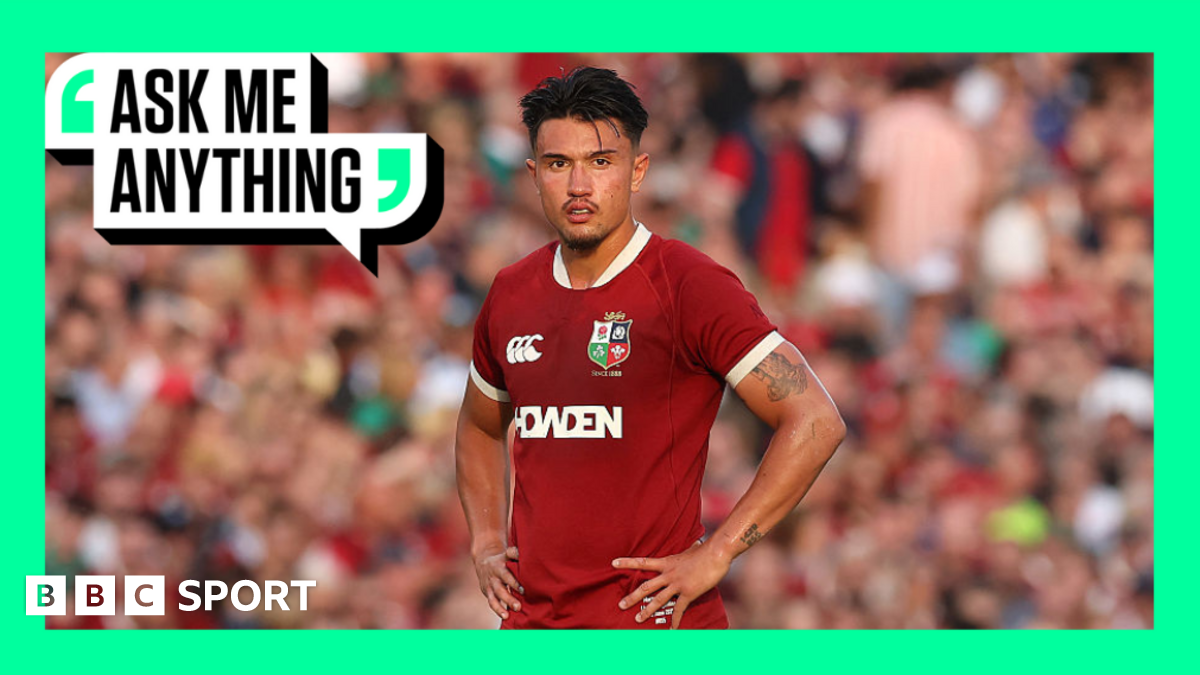The British and Irish Lions have worn their traditional kit of red jerseys, white shorts and blue socks with a green turnover at the top on every tour since 1950. The colours were chosen in order to represent the unity of the four rugby nations which make up the Lions - England, Ireland, Scotland and Wales. Prior to 1950, the Lions had worn kits of various different designs, all featuring the colours red, white, and blue. The first Lions kit in 1888 featured blue and red horizontal stripes on a white shirt, with white shorts and blue socks. That was followed by a variety of similar designs until 1910, when the team adopted a kit made up of a dark blue jersey with white collar, white shorts, and red socks. The now-traditional Lions kit was adopted for the first time in 1950 In the 1930 tour of New Zealand, the blue jersey design generated significant controversy. Firstly, it caused a kit clash with the All Blacks, who were forced to find an alternative, leading them to wear white for the first time in their history. Meanwhile, Irish lock George Beamish questioned the lack of green on the kit, leading to the addition of a green turnover on the socks. The blue jersey remained until the last tour before World War Two, in South Africa in 1938. After the end of the conflict, the Lions scheduled a return to New Zealand in 1950, and the blue jersey was dropped in favour of red in order to avoid the same kit clash which led to the dispute in 1930. From there, the red jersey has stuck and remained unchanged aside from minor branding additions. Kit supplier logos began appearing on Lions kits in 1993, when Nike manufactured the team's apparel, while the first front-of-shirt sponsor was Scottish Provident in 1997. The 1997 Lions jersey was the first to feature both a kit manufacturer logo and front-of-shirt sponsor Send us your questions This article is the latest from BBC Sport'sAsk Me Anythingteam. Ask Me Anything is a service dedicated to answering your questions. We want to reward your time by telling you things you do not know and reminding you of things you do. The team explores everything you need to know and calls upon a network of contacts including our experts and pundits. We answer your questions from the heart of the BBC Sport newsroom, and go behind the scenes at some of the world's biggest sporting events. Our coverage spans the BBC Sport website, app, social media and YouTube accounts, plus BBC TV and radio. How did the British and Irish Lions begin? What is tackle school? What are the Triple Crown and Wooden Spoon? How do points work in the County Championship? What is DRS in Formula 1 and what's coming next?
Why do the British and Irish Lions wear red jerseys?
TruthLens AI Suggested Headline:
"The Historical Significance of the British and Irish Lions' Red Jerseys"
TruthLens AI Summary
The British and Irish Lions, a rugby union team comprising players from England, Ireland, Scotland, and Wales, have proudly donned their iconic red jerseys since 1950. This choice of color symbolizes the unity of the four nations that make up the Lions. Historically, the team has experimented with various kits, starting with their inaugural jersey in 1888, which featured blue and red stripes on a white background. Throughout the years, the design evolved, including a notable dark blue jersey introduced in 1910. However, the 1930 tour to New Zealand was particularly contentious due to a kit clash with the All Blacks, which forced them to wear an alternative color for the first time. Irish lock George Beamish's objections about the absence of green in the kit led to the incorporation of a green turnover on the socks, highlighting the importance of representing all participating nations in their attire.
After World War II, the Lions returned to New Zealand in 1950, opting for the now-familiar red jersey to prevent any recurrence of the previous kit clash. This decision marked a significant shift in the team's identity and has remained largely unchanged since then, aside from minor branding updates. The introduction of sponsorship logos began in 1993, with Nike becoming the kit supplier, followed by the first front-of-shirt sponsor appearing in 1997. The Lions' jersey has since become a symbol of pride and tradition, encapsulating the rich history and camaraderie among the four nations while also adapting to modern commercial practices. The evolution of the Lions' kit not only reflects their sporting journey but also serves as a reminder of the deep-rooted connections between the British and Irish rugby communities.
TruthLens AI Analysis
You need to be a member to generate the AI analysis for this article.
Log In to Generate AnalysisNot a member yet? Register for free.
